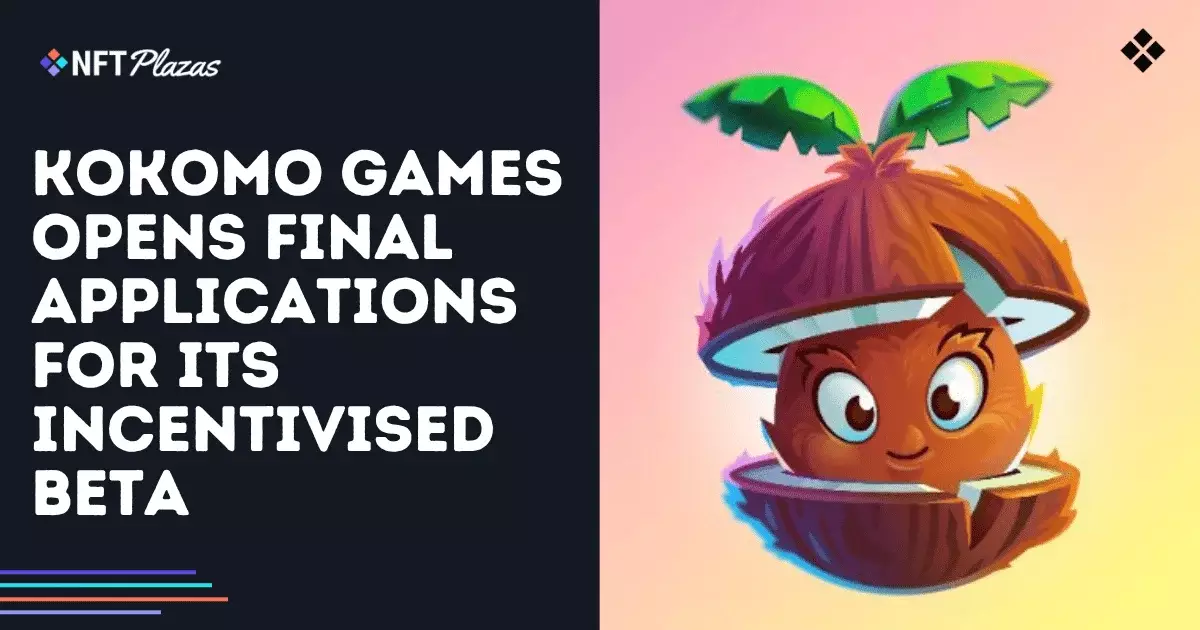In a landscape saturated with fleeting trends and overhyped technologies, Kokomo Games emerges as a beacon of boldness, daring to blend casual gaming with blockchain’s complexities. Their recent move to open a final round for beta testers epitomizes a broader industry shift—leveraging NFTs and Web3 elements to redefine how players engage with digital entertainment. At first glance, this initiative appears to promise democratized access, incentivized community building, and early glimpses into a future where gaming and blockchain intertwine seamlessly. Yet, beneath this shiny veneer lies a set of profound questions about sustainability, peripheral risks, and whether the industry’s faith in NFTs as a gaming utility can truly withstand scrutiny.
The Paradox of Accessibility and Exclusivity
Kokomo’s approach aims to democratize early access by offering pre-funded accounts, allowing testers to dive into mini-games like Snake, Chess, Blackjack, and Arrow Racer without the hurdle of initial investment. Such inclusivity sounds progressive—part of a broader push to make blockchain-based gaming less opaque and more open to casual players. However, the reality is somewhat more complex. Participation hinges on following multiple social media accounts and filling out forms amidst a series of engagement campaigns. This raises questions about true accessibility and whether such vetting processes serve the community or merely gatekeep the beta to a self-selected, more engaged segment. Additionally, with no fixed deadline, scarcity becomes another layer of control, potentially fueling hype but also risking frustration among genuinely interested gamers who might be left waiting indefinitely.
The Duel of Utility and Speculation
Kokomo’s gambit is not purely a gaming endeavor—it’s intertwined with financial incentives, tokenomics, and NFTs that confer tangible in-game benefits such as reduced fees, exclusive modes, and governance rights. The Kokomons NFT collection, tethered to a native token ($KOKO), embodies a typical web3 strategy: creating utility that extends beyond mere collectibles. Yet, this blurs the lines between entertainment and investment, fostering an environment where gameplay risks being overshadowed by speculation. Players might be enticed to engage not solely for fun but for potential financial gains or to increase their stake within an ecosystem increasingly driven by token value rather than skill or enjoyment. It’s a precarious balancing act that could alienate traditional gamers wary of moving into a space rife with financial complexities.
The Reality Check: Is Web3 Gaming a Sustainable Venture?
While Kokomo’s ecosystem presents a compelling vision—integrating NFTs, rewards, and social engagement—it faces the fundamental challenge: can blockchain-based gaming sustain itself beyond fleeting trends? Many projects have launched with grand promises only to fade into obscurity once the hype diminishes. There’s a tendency for these platforms to prioritize tokenomics and asset speculation over genuine game design and user experience. Kokomo’s reliance on funding rounds featuring big names and high-profile investors may boost its profile, but it does little to ensure long-term viability. Eventual market saturation, regulatory scrutiny, and waning interest in blockchain gaming will test whether this model can evolve into a genuinely fun, sustainable experience or remains an elaborate attempt at monetization masked as innovation.
The Future of NFT Gaming: A Center-Right Perspective
From a center-right perspective, the push for innovation in gaming must be tempered with caution and pragmatic oversight. The allure of NFTs and decentralized economies should not overshadow the core objective: creating engaging, accessible entertainment that respects the consumer’s interests over speculative gains. Kokomo’s latest beta rollout highlights the industry’s tendency to chase novelty, but true progress lies not in quick wins or artificial scarcity but in developing resilient platforms that prioritize user welfare, clear regulation, and a healthy balance between innovation and consumer protection. Fancy NFT collections and incentivized beta tests are attractive, but they must not distract from the foundational goal—delivering quality gaming experiences that can stand the test of time without relying solely on hype and financial engineering.
While Kokomo’s initiative might invigorate some corners of the gaming community, the broader implications suggest caution. The intersection of gaming, blockchain, and NFTs remains fraught with uncertainty, and only through balanced, responsible development can this space hope to mature beyond a transient trend into a legitimate evolution of digital entertainment.














